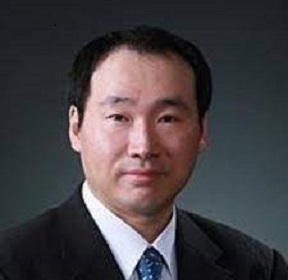
Hee-Young Kim
KoreaTitle: Eustachian tube function should be tested before vestibular function
Abstract:
Eustachian tube dysfunction (ETD) is defined by symptoms and signs of pressure dysregulation in the middle ear. Vertigo associated with ETD is caused in most (and perhaps all) instances by unilateral Eustachian tube obstruction or by more complete obstruction one side than the other. Vertigo due to unilateral ETD was first defined as “alternobaric vertigo” (or ‘vertigo altenobarica’), by Dr. Claes Lundgren who coined the term in 1965 to describe vertigo in deep-sea divers. The fundamental mechanism of ABV is asymmetrical middle ear pressures. This diagnosis can also be applied to cases at ground level. Persistent ABV at ground level is associated with abnormal vestibular function test results. ABV should be differentiated from any condition conferring active risk of vertigo or severe disequilibrium. Vestibular organs are affected by pressure in the middle ears which makes them dependent variable organs. Every clinical test currently used to assess vestibular function should ideally be performed in a state where pressures in the middle ear cavities are well within normal range, and perfectly balanced between the ears. Taking these points into consideration, I would like to (1) propose that ABV be included in the ETD Consensus Statement as an official symptom of ETD, and that Eustachian tube catheterization also be recommended as a method for diagnosis and management of ETD. (2) reiterate that Eustachian tube function should be tested before vestibular function, and (3) call for case studies and research into cases of vertigo where Eustachian tube function was assessed before vestibular function.
Biography:
Dr. Hee-Young Kim is an otolaryngologist and director of Kim Ear, Nose and Throat Clinic, Seoul, Republic of Korea. He received his Doctor of Medicine, and PhD in pathology from Chung-Ang University, South Korea. Dr. Kim’s area of academic interest is Eustachian tube dysfunction and he has published on topics such as Vertigo: Eustachian tube function should be assessed before vestibular function, Eustachian tube catheterization, vertigo due to Eustachian tube obstruction in peer reviewed journals. Dr. Kim was awarded the Albert Nelson Marquis Lifetime Achievement Award. Since 2016, he has served as the Editor-in-Chief of the Journal of Otolaryngology-ENT Research. (Up to 100 words)

Hee-Young Kim
KoreaTitle: Eustachian tube function should be tested before vestibular function
Abstract:
Eustachian tube dysfunction (ETD) is defined by symptoms and signs of pressure dysregulation in the middle ear. Vertigo associated with ETD is caused in most (and perhaps all) instances by unilateral Eustachian tube obstruction or by more complete obstruction one side than the other. Vertigo due to unilateral ETD was first defined as “alternobaric vertigo” (or ‘vertigo altenobarica’), by Dr. Claes Lundgren who coined the term in 1965 to describe vertigo in deep-sea divers. The fundamental mechanism of ABV is asymmetrical middle ear pressures. This diagnosis can also be applied to cases at ground level. Persistent ABV at ground level is associated with abnormal vestibular function test results. ABV should be differentiated from any condition conferring active risk of vertigo or severe disequilibrium. Vestibular organs are affected by pressure in the middle ears which makes them dependent variable organs. Every clinical test currently used to assess vestibular function should ideally be performed in a state where pressures in the middle ear cavities are well within normal range, and perfectly balanced between the ears. Taking these points into consideration, I would like to (1) propose that ABV be included in the ETD Consensus Statement as an official symptom of ETD, and that Eustachian tube catheterization also be recommended as a method for diagnosis and management of ETD. (2) reiterate that Eustachian tube function should be tested before vestibular function, and (3) call for case studies and research into cases of vertigo where Eustachian tube function was assessed before vestibular function.
Biography:
Dr. Hee-Young Kim is an otolaryngologist and director of Kim Ear, Nose and Throat Clinic, Seoul, Republic of Korea. He received his Doctor of Medicine, and PhD in pathology from Chung-Ang University, South Korea. Dr. Kim’s area of academic interest is Eustachian tube dysfunction and he has published on topics such as Vertigo: Eustachian tube function should be assessed before vestibular function, Eustachian tube catheterization, vertigo due to Eustachian tube obstruction in peer reviewed journals. Dr. Kim was awarded the Albert Nelson Marquis Lifetime Achievement Award. Since 2016, he has served as the Editor-in-Chief of the Journal of Otolaryngology-ENT Research. (Up to 100 words)
